https://www.bbc.com/news/science-environment-44636774
Discovering King Tutankhamun's tomb: Harry Burton's photographs
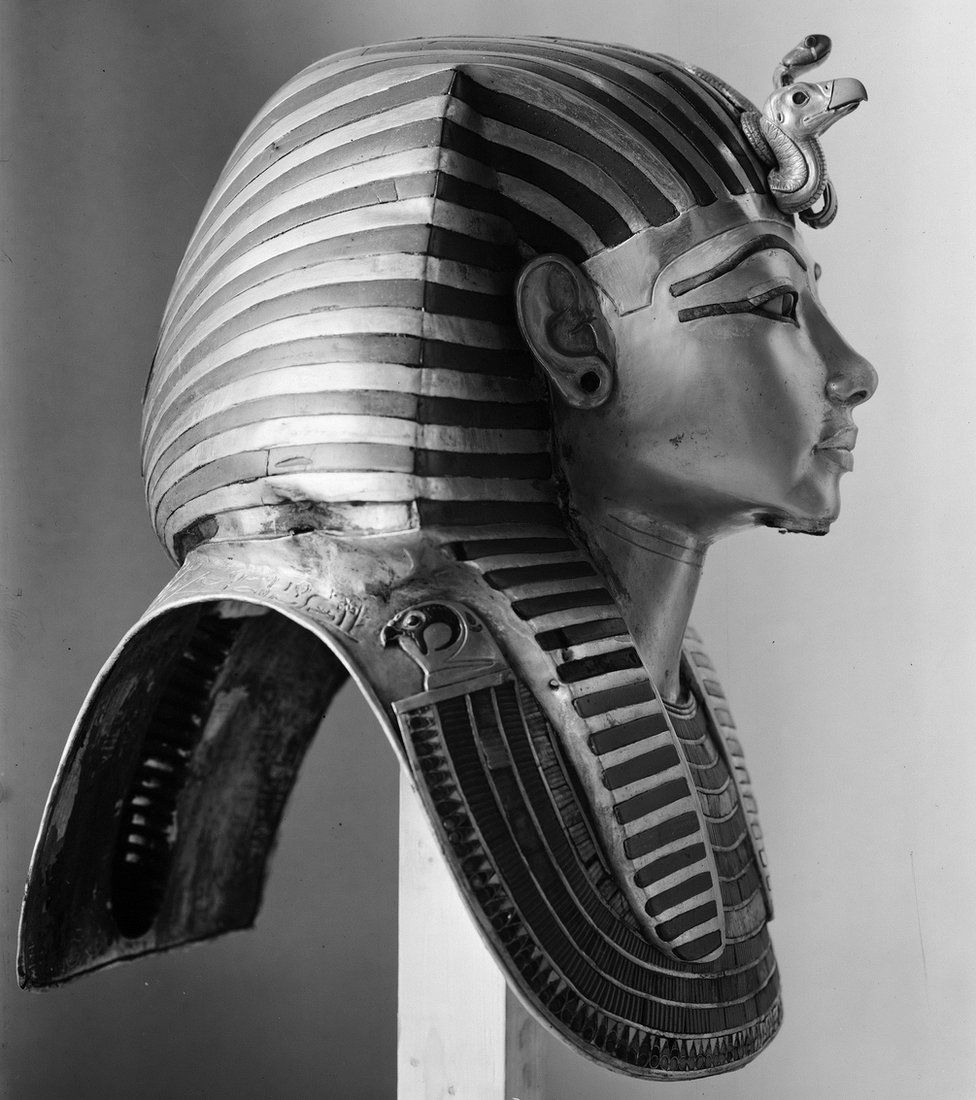
Image copyright Griffith Institute/Oxford University Image caption The inlaid beard normally seen on the mask was attached in the 1940s
A new exhibition reappraises the work of Harry Burton, who photographed the decade-long Tutankhamun excavation. The collection is a striking record of a groundbreaking moment in our study of the past.
It was one of the most remarkable archaeological discoveries of the 20th Century.
But what was it like to first point a lens into the 3,000-year-old tomb of King Tutankhamun?
That job fell to Harry Burton. He took more than 3,400 photographs of the treasures uncovered by Egyptologist Howard Carter in a decade-long investigation of the famous site.
Now, Burton's photos - many previously unpublished - are on show at Cambridge University.
Prof Christina Riggs is the first to study the collection in its entirety. From the prints, negatives and rejects, she says that fascinating new perspectives on the astonishing discovery - made in 1922 - have begun to emerge.
The magic and the reality
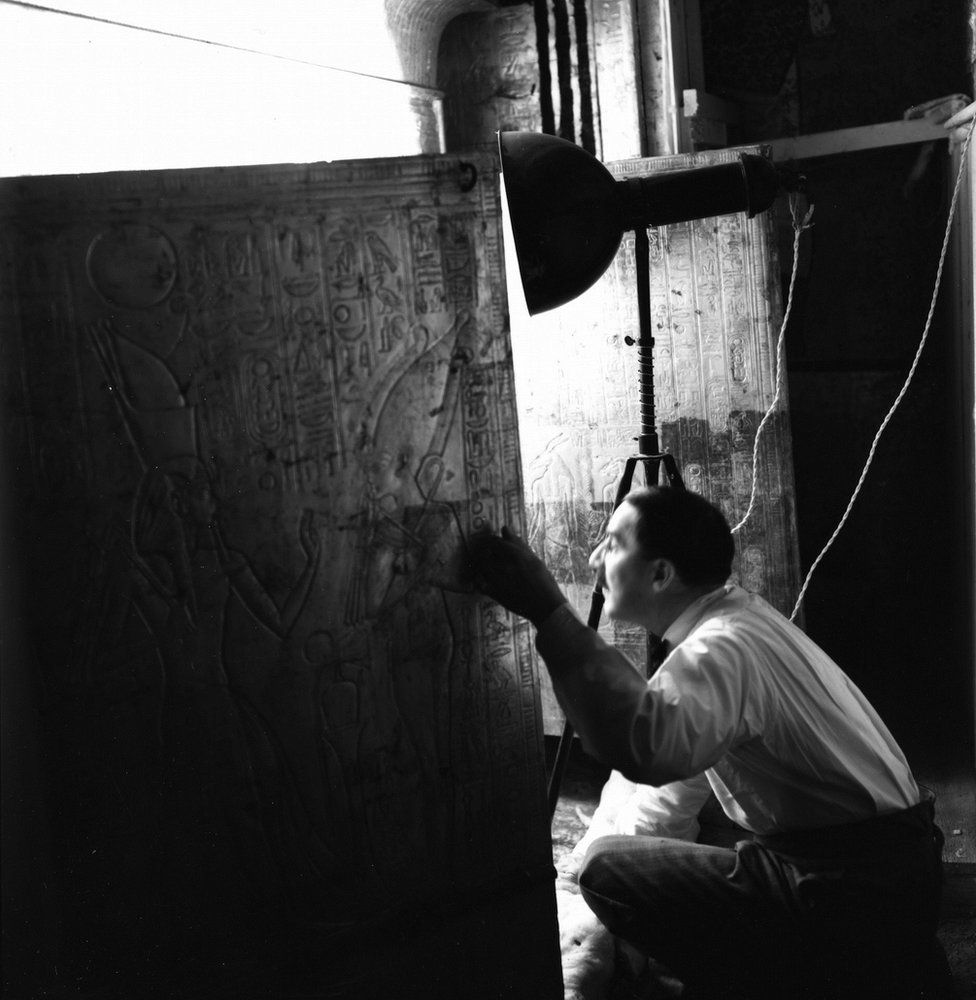
Image copyright Griffith Institute/Oxford University Image caption Archaeologist Howard Carter peers into the burial chamber
By exploring the photographs that did not make the cut, alongside those reproduced and widely circulated throughout the 1920s, new information is brought to light.
"It's about shifting our entire perspective on ancient Egypt, modern Egypt, and archaeology," says Prof Riggs, who is the curator for the exhibition Photographing Tutankhamun, at the university's Museum of Archaeology and Anthropology.
"Once we start thinking about the complex, and inherently unequal, set of relationships in which the archaeology took place, it's hard to see photographs in any kind 'neutral' way," she explains.
Although touted as depicting the moment Carter discovered the legendary tomb, the picture above was actually taken over a year later, in January 1924. By this time, excavators had demolished the wall separating the tomb's first room from the burial chamber, which Carter is seen peering into.
But, said, Prof Riggs, this photograph "lets us imagine that Carter is gazing directly at something even more wonderful, something that almost seems to glow from within".
What is not apparent to the casual observer is that Carter is looking through two sets of doorways towards the royal coffins. The photograph is "carefully staged", according to Prof Riggs. Burton's Egyptian assistants would have held reflectors to bounce light to create an effect that Carter himself called a "mystic mauve glow".
Locals' 'unrecognised' contribution
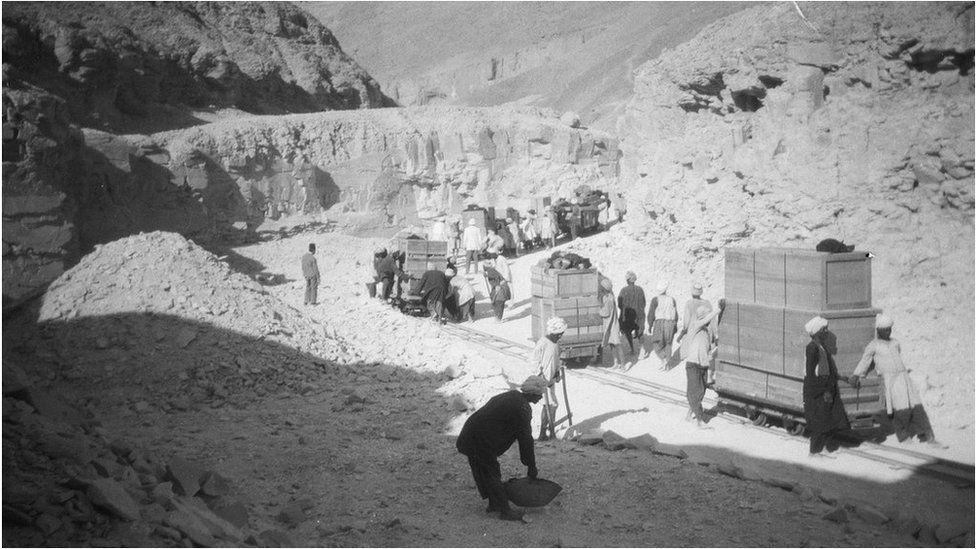
Image copyright Griffith Institute/Oxford University Image caption A lightweight rail system was used to help transport crates of artefacts to a barge
More than a hundred men, boys, and girls were hired to excavate and remove earth from the discovery site.
This photograph from May 1923 shows the arduous work of moving crates of artefacts from the tomb in the Valley of the Kings to the Nile river town of Luxor - almost six miles away.
A government barge would transport the precious cargo, under guard, downriver to arrive at the antiquities museum in Cairo. This trip alone would take two days in scorching 38C (100F) heat.
A lightweight rail track was used to push the crates along. Sections could be lifted and re-laid, to make the carrying easier. In the heat, Carter said the track rails were nearly too hot to touch.
Egypt's most famous ancient artefact
Adorned with semi-precious stones and inlaid with intricately carved glass, Tutankhamun's golden mummy mask was photographed by Burton in December 1925.
He took more than 20 pictures of the mask, trying to catch every angle and perspective after Carter had spent weeks removing a hard resin that would have been poured over the mummy as part of ancient Egyptian religious ritual.
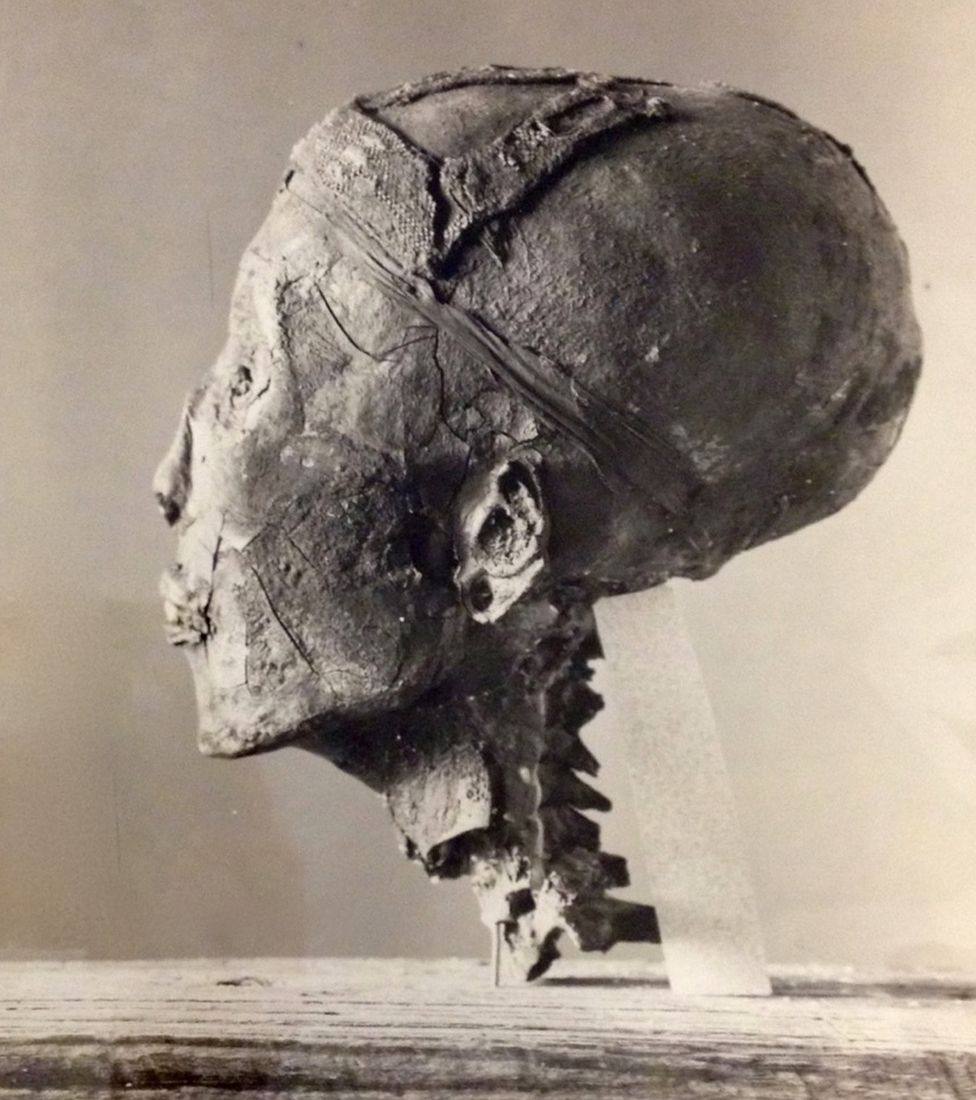
Image copyright C.Riggs/Metropolitan Museum of Art Image caption Tape is used to mask the paintbrush holding the head upright
Some of the photographs were unseen by the public because they were taken strictly for use by archaeologists. The picture above shows the king's mummified head propped up on an old plank of wood with a paintbrush handle. The paintbrush has been masked out with tape.
Photographs of "the boy king's" head were not published anywhere until the 1960s, when the first big Tut-themed show took place in Paris.
Burton's photo techniques

Image copyright Griffith Institute/Oxford University Image caption Burton cropped this photograph to show just the bed, found in the smallest chamber in the tomb
This previously unpublished negative shows some of Burton's technique. A wooden bed from the tomb is photographed in front of a white backdrop held aloft by two Egyptian boys. One of these assistants is just visible on the left.
Prof Riggs said the boys would have shaken the backdrop as the photograph was taken. This would have ensured it came out blurry while the bed was kept perfectly in focus by the camera on its tripod.
How Burton got the job
Harry Burton, the son of a cabinet-maker, took up photography while in Florence. There, he met a very wealthy American named Theodore Davis, who had a particular passion for funding excavations in Egypt. As WWI began, Davis was near death, but recommended Burton to the Metropolitan Museum of Art in New York, who then employed him in Egypt.
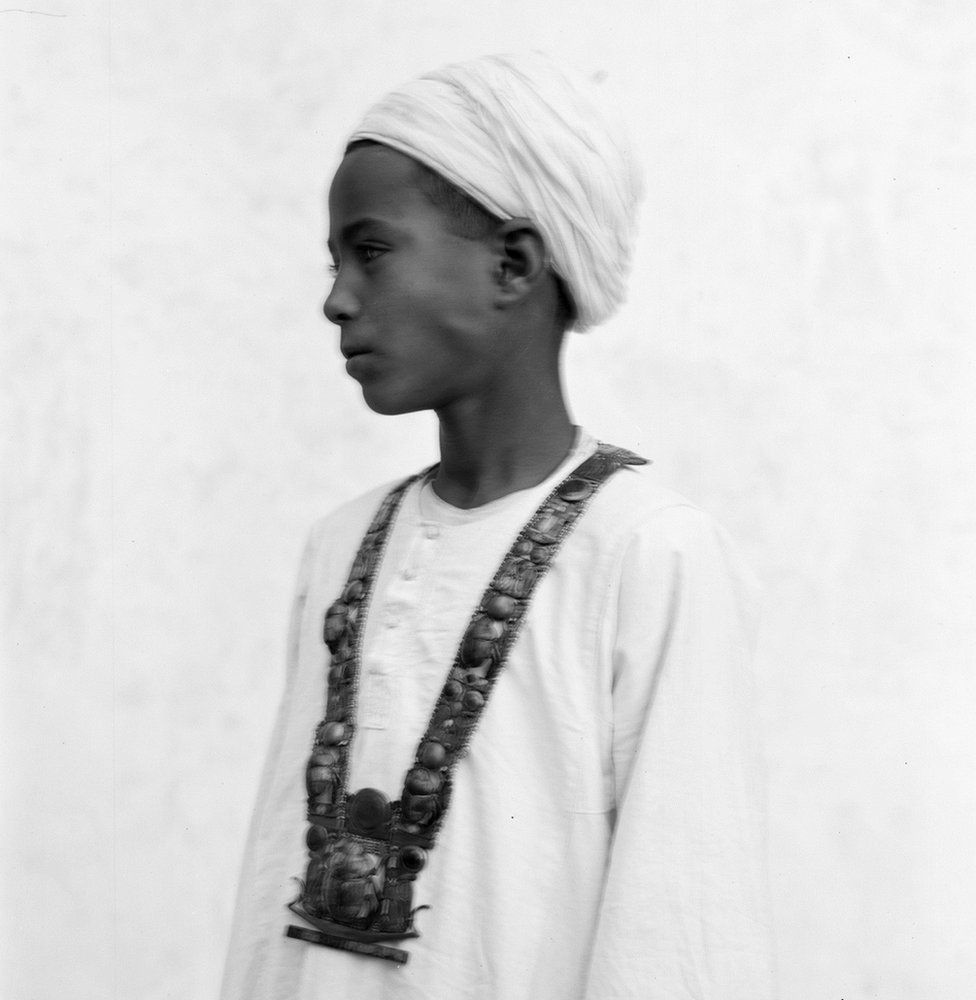
Image copyright Griffith Institute/Oxford University Image caption The heavy gold necklace is adorned with glass and semi-precious stones
More insights into the excavation story can be gleaned from the never-before-printed negative of a boy and his heavy necklace.
"You can see the nerves or tension in the face of an Egyptian boy, who was dressed up to wear one of the heavy gold necklaces from the tomb," explained Prof Riggs.
In later years, a man from a leading local family, Sheikh Hussein Abd el-Rassul, identified himself as the boy in the photograph. Today, prints can be seen hanging in the guest house that Sheikh Hussein owned near the Ramesseum temple - the imposing monumental complex dedicated to the memory of Pharaoh Ramesses II.
"Some of the most surprising photographs show children, aged six and seven, doing heavy labour at the time... it's sort of taken for granted," said Prof Riggs, who is affiliated to the University of East Anglia (UEA).
Putting the record straight
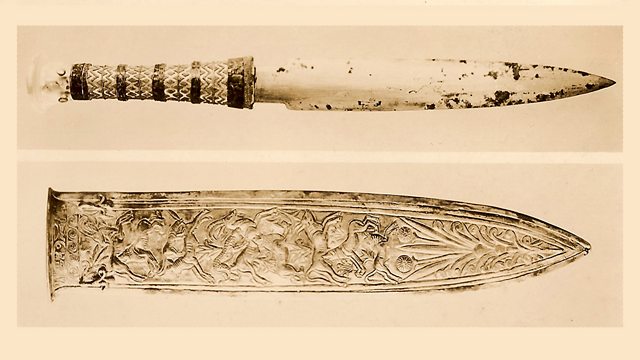
Media captionProf Christina Riggs: "It's taken a lot of detective work to put together the archive"
Prints of Burton's photographs were a significant part of the "Egyptomania" of the 1920s and inform our fascination with the ancient civilisation today.
"The discovery of Tutankhamun was a powerful symbol to many Egyptians, of the reawakening of their own country - and the Egyptian antiquities authorities insisted on their right to keep the tomb objects in Egypt," said Prof Riggs.
But in 1929, when it became clear the museum would not receive a share, it meant that all of Burton's work had essentially been for free. Carter gave the New York museum some of the photographs instead.
"Few people know today that the discovery of the tomb became a political flashpoint between Britain and the newly independent Egyptian government," Prof Riggs added.
By seeing all of Harry Burton's images, including some shot by Egyptian archaeologists whose names were not identified in the albums, the UEA academic has been able to unpick the crucial Egyptian contribution to the project, and to decipher some of the choices that were made in deciding what to photograph, and how.
"Photography became the ideal way to try to record what archaeology was doing," said Prof Riggs.
"I hope it helps us see the Egyptian contribution that hasn't been mentioned enough, hasn't been acknowledged."
The exhibition at Cambridge University's Museum of Archaeology and Anthropology runs until 23 September. It has been staged with support from the British Academy, UEA, and the Griffith Institute at Oxford University. Entry is free. For more about the history of the Tutankhamun excavation, including low-resolution scans of photographs taken at the time, visit the website of the Griffith Institute
-- Sent from my Linux system.
No comments:
Post a Comment